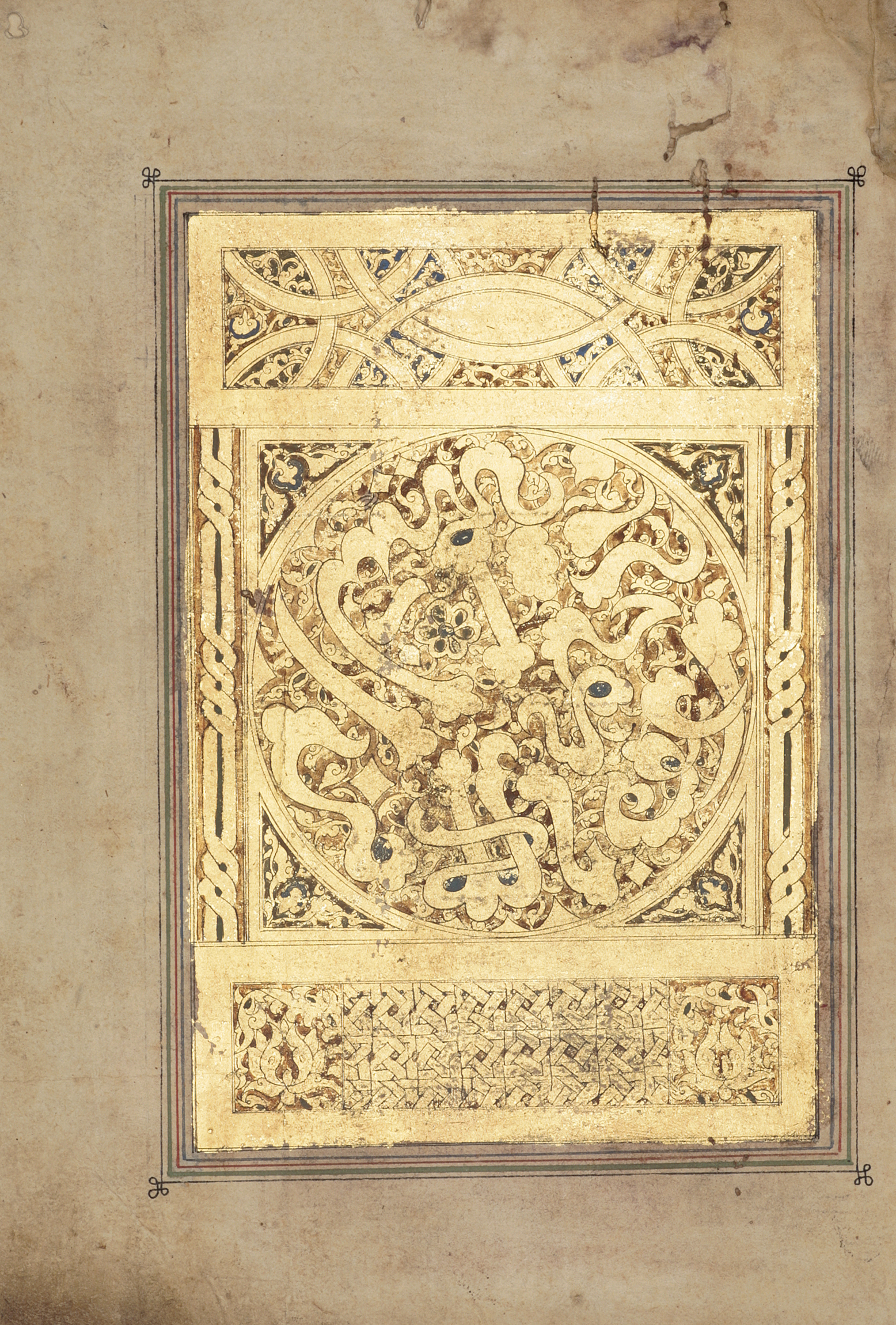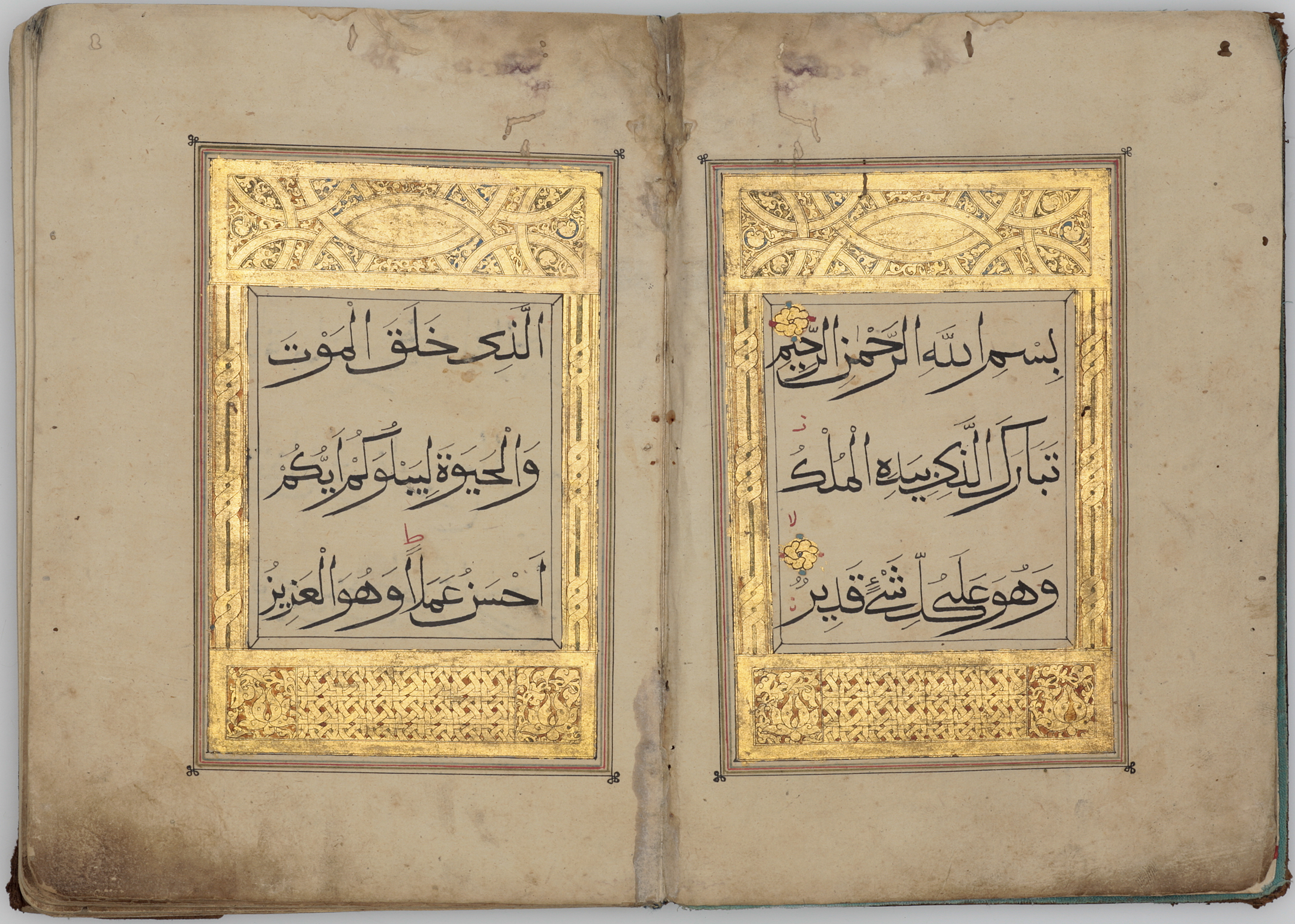 Print Page
Print Page
 Print Page
Print Page
Location: Great Mosque of Khanbaliq (modern Beijing), China
Materials: ink, gold and opaque watercolour on paper; leather binding with flap, possibly of slightly later date
Dimensions: 56 folios; 24.5 x 17.5cm
Accession Number: QUR 974
Other Notes:
This is an early specimen of a type of Qur’anic manuscript with its roots in eastern Iran, produced by the Huihui, or Chinese Muslims, under the Ming and Qing dynasties. The most conspicuous of the illuminated pages is the frontispiece (folio 2a), which has a central roundel inscribed in a rounded script ingeniously combined with Chinese cloud scrolls. The effect is intriguingly different from the chinoiserie art produced in Iran under Mongol or Timurid domination.
Script:
main text copied in muhaqqaq script, incidentals in a form of riqa‘; 5 lines to the page
Bibliography:
M. Bayani, A. Contadini & T. Stanley, The Decorated Word. Qur’ans of the 17th to 19th Centuries, The Nasser D. Khalili Collection of Islamic Art, volume IV, Part One, London 1999, cat.1, pp.10, 13–14 and 16–17.
J.M. Rogers, The Arts of Islam. Masterpieces from the Khalili Collection, London 2010, cat.176, p.151.

